Looking Back at Anticipated E3 Games
June 18th, 2010
Since I’m now writing for Kombo (articles have been pending for 2 months now), I lent my ideas to a recent list of anticipated games for E3 and sadly none of my comments were added to the article. So, in the mantra of reduce, reuse and recycle, I have decided to post my pre-E3 ideas here, followed by some short after-show impressions.
Zelda: Skyward Sword
Zelda: Twilight Princess was the apotheosis of the Ocarina of Time-era design—a template which was ultimately a 3D culmination of the prior 2D games up to that point. Perfection is nice and all, but it’s been 12 years since the franchise’s last major revision. Aonuma-san and crew must be wary of this, so I most look forward to the way they’ll attempt to reinvigourate the franchise. Wii Motion Plus will obviously be at the heart of their attempt, but I’m also curious as to whether they’ll tinker with the orderly, dungeon-per-dungeon design that has characterised the series since its existence. Okami tried this and mostly failed, I think that Nintendo can reinvent themselves better.
After the show: As expected, the design sensibilities from the DS games have been wisely adapted to the Wii. Won’t know if they’ve made any fundamental changes to the franchise until it’s released.
Dead Space 2
Having interjected the original Dead Space narrative with a supporting comic, animated movie and stand alone game (Dead Space: Extraction), Dead Space 2 stands to represent whether EA are genuine or will waver on their commitment to Dead Space as a trans-media franchise. Dead Space: Extraction worked well as a conduit in connecting the various pieces of narrative, Dead Space 2 has the potential to turn the franchise into a cross-media universe.
Dead Space 2‘s place in the narrative seems to suggest that Visceral Games will finally explicate on the franchise’s psychological elements. Again, I think that there is much potential here and I hope that it ascends beyond mere graphical tomfoolery and blind sided plot twists.
After the show: Meh. More of the same and no commitment to diversification.
Metal Gear Solid Rising
It’s curiosity above all else that has me anticipating the reveal of Metal Gear Solid Rising. How on Earth can Konami develop a Raiden sub-story without narrative complication? The placeholder pic used in Microsoft’s E3 press conference last year seems to suggests that Rising will take place around the events of Metal Gear Solid 4. So, they’ll either focus on Raiden’s rescuing Sunny from the Patriots or go post-MGS4 with a bionically configured Raiden. Either way, expect Devil May Cry-flavoured action in a cybernetic landscape.
After the show: Uncertain as to how Konami will smoothly integrate the slicing controls without killing the pace, but at least it has found something of a niche (“cut!”), even if I disapprove of the violence.
Estpolis: The Lands cursed by the Gods
Already released in Japan, I’m just looking forward to reading more hands-on impression of the action RPG remake of Lufia 2: Rise of the Sinistrals. I’m not sure whether the deviations, such as the screen-filling boss battles, will meld well with the original design, so I hope that the reporters at E3 can find me an answer. Regardless, Neverland, the developers of the SNES original, have recently restored my faith in another SNES RPG classic Harvest Moon through their sublime Rune Factory sub-series, so I am not overly concerned.
After the show: Haha! As if anyone would cover this game when they could write about slow motion headshot and decapitations.
Bionic Commando: Rearmed 2
I don’t like the way Capcom have part ridiculed Bionic Commando: Rearmed by flamboyantly promoting the inclusion of a jump mechanic in its sequel. I guess it’s a pretty funny jab, but the lack of jump wasn’t just an incidental exclusion in BC:R or the original game. The absence of a jump mechanic supported the titular swinging functionality, so I imagine that by including jump, Rearmed 2 will only further the challenge in dexterity.
After the show: Like Zelda, won’t know until it’s released. Nothing else worth commenting on.
Microtransactions: The Inherent Failure Of Natal and Move, and More
April 6th, 2010

Why Natal and Playstation Move will Likely Fail?
I really ought to dedicate more writing space to this topic, but it’s actually a very simple argument.
The reason why the Wii and DS are so successful and why Natal and the Playstation Move will likely fail is entirely software related. Let’s use the Wii and DS as a case study. Technology alone does not sell hardware, software does, software which works in unity with hardware. If there is no good software to give meaning to the hardware, then people will think that the hardware is useless. If there was no Brain Age, Nintendogs, Elite Beat Agents or Zelda: Phantom Hourglass then people would still think that the DS is useless, as they originally did before software proved them wrong. The same is true of the Wii. (Although the Wii is still somewhat draped in cynicism because 3rd parties haven’t stepped up to the plate as they have with the DS).
If it all comes down to the software then what really matters is who is developing games for these things. 1st party-wise Sony’s Eyetoy studio and Microsoft’s weak internal studios (Rare, most likely will constitute the majority of 1st party Natal games for Microsoft) can’t compare to Nintendo’s internal divisions. None of the software demonstrated so far has captured the press in the same way Wii Sports or Brain Training.
On the 3rd party front, if the Wii has had this technology for some years and has a 60+ million install base and is still lacking quality 3rd party games, then I doubt that many 3rd party developers will jump to the technoligcally-similar Playstation Move or the unestablished interface of Natal with an initial install base of zero. The logic behind developing softwae for these system is absent. Furthermore, with a far smaller market to attack, the developers that do succeed will initially struggle to make significant gains. It will take several developers producing several killer applications for these accessories to gain sufficient momentum and remain relevant. Keep in mind that several of the major publishers backing Natal-developed games are already claiming that they’ll only be developing smaller, mass market titles, hardly the type of product which will sell on a system with a shooter-centric image.
Software aside, how do we know that the hardware itself will work? There are still doubts over the lag in Natal and processing power required to handle Natal games. The Playstation Move only allows for 2 player games. Will these peripherals be bundled with game system or games? The systems themselves are already more expensive than the Wii, add in an accessory and pack-in game and that price naturally increases. Above all else, assuming that Microsoft, Sony or their 3rd parties produce fantastic games, the tech works fine and is affordable and retails support the devices, will they be able to market the peripherals effectively? This, is perhaps as challenging as the development of software. How to unlock an audience you’ve never been successful at capture?
It would be quite the monumental feat for either company to successfully meet these all these challenges, so I figure that their chances are pretty slim. The comparison to Nintendo’s phenomenal success is a bit harsh, true, yet similar levels of success, I’d wager, are needed to establish these devices in the market place and keep them going, particularly with competition from two other companies.
In the end I’m just explicating on what everyone already knows “these things will flop without software”.
Judging the Inherent Fun in Controllability
There’s a sort of mental litmus test which I use to evaluate the controllability in games. It’s very simple, and goes something like this: if all the player could do was control the protagonist in an empty space with no distractions, how long would they play for? That is, to what extent is controlling the character fun on its own?
It’s a bit tricky to judge ultimately, because some games feature much more complicated control systems than others, meaning that it’d take longer for someone to exploit one system to its fullest than others, which may in fact be more enjoyable.
For example, Metal Gear Solid 4 and Super Mario Bros. Super Mario Bros is obviously the superior title in terms of controllability, however, I could fiddle around with all of Solid Snake’s ability set for maybe up to a quarter of an hour.
In anycase, it’s worth considering this methodology, because I’ve personally found it quite useful.
Gamers Don’t Want Innovation
Gamers aren’t genuinely interested in innovation, I’d argue. Put simply, human nature says that we’re afraid/dismissive of truly new ideas. This is the reason why we all remain as slaves to capitalism whilst socialist ideology is cast-typed as extremist/fundamentalist. It’s the same reason why the Wii is still subordinated by the hardcore and the enthusiast, despite delivering innovation.
Innovation is only acceptable in small, familiar doses (subversion of the very definition of innovation), such as Borderlands, which recycles two very familiar forms of play. If games truly embraced innovation then the independent scene would reign over the mainstream.
GameFAQ Writers VS Bloggers: The Better Candidate for Criticism
This year I’ve found myself falling into this habit where on completing a game, I’ll snuff out a guide on GameFAQs to acquaint myself with the bonus material and unlocks that I’m probably missing out on. This habit has made me realise that FAQ writers, as expert players, are in the most advantageous position to effectively evaluate game design, leagues ahead of us bloggers.
Expert players, or at least competitive players seek to win, and win effectively. In order to win they must first fully understand the conditions of the ‘win’ state, ie. the operations of play, and then devise the most efficient means to reach these conditions. Seeing past the glossy veneer and interpreting the game as a series of rules is pivotal to their success. The more familiar they are to these rules, the easier it will be for them to reach the ‘win’ state. While ordinary players also go through these processes as well, it’s almost entirely subconscious (this is why we have difficulty in understanding and talking about games). The mind of a competitive player is always working to sharpen their understanding of the rules.
As a result of all this, when it comes to critiquing games, generally speaking, I think hardened players will be at an advantage. Of course, this is all generalities and what I’m really saying is that being competitive spurs people on to think hard about the operations of a game. This doesn’t mean that non-competitive players are bad evaluators. No. These players don’t need to be competitive in order to think hard about games, but rather, being competitive often helps people to really focus in on game design and that when it comes to general conversation about games, competitive players are likely to be the more interesting conversationalists.
Visual Connection – Graphical Perfectionism
March 4th, 2010
I reckon that we need to rethink the way we approach graphics in video games. Rather than increased realism, we need increased perfectionism; visuals which are for all their intents perfect. Creating realistic-looking games only works against the grind of perfect graphics, as the higher the aim for realism, the greater chance there is of landing in the all too familiar uncanny valley.
What do I mean by “perfect graphics” though? Good point. Allow me to illustrate with a list of random games which I personally consider as visually flawless.
- Abes Oddysey
- Donkey Kong Country
- Super Mario Bros.
- House of the Dead II
- Zelda: Wind Waker
- Okami
- Super Mario Galaxy
- Wipeout HD
- Yoshi’s Island
- Metal Gear Solid: Ghost Babel
- Zuma
- Paper Mario
- Super Monkey Ball
- Wario Land SD
- Final Fantasy Tactics
- Resident Evil Remake
- Metal Slug
- Bionic Commando: Rearmed
- Valkyria Chronicles
Each of the listed games are artistically beautiful, with no (or incredibly little) imposition from technical limitations. None of the above games can benefit greatly from increased graphical fidelity. In fact, better graphics would probably make House of the Dead II less effective, because it’s a game which ravishes in the graphical constraints. The low resolution textures actually serve to make the world more unappealing.
The graphical direction, that of perfection, seen in the above games are what we ought to be striving for, rather than pidgeonholing ourselves towards realism. Marvel at the screenshots below as examples of this perfection:
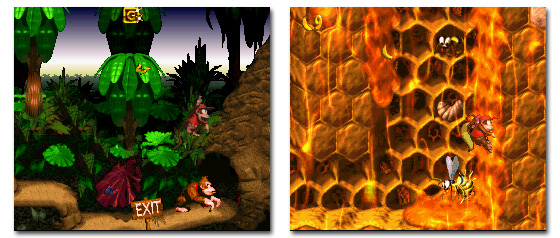
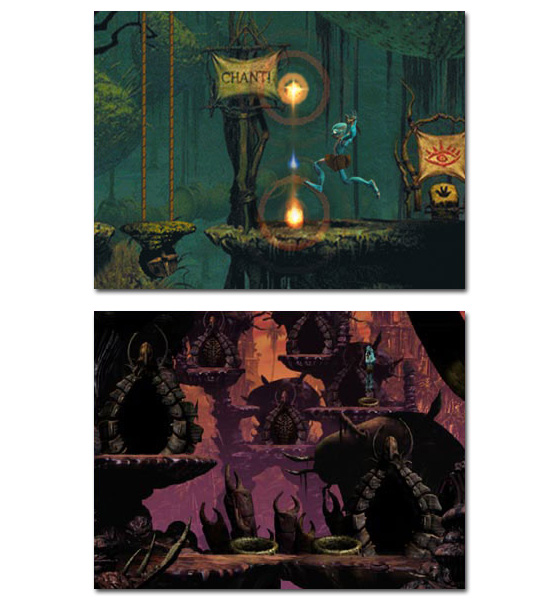
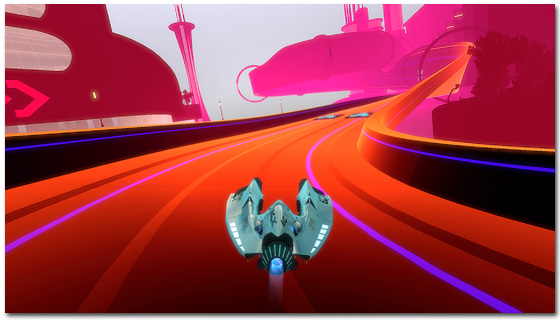
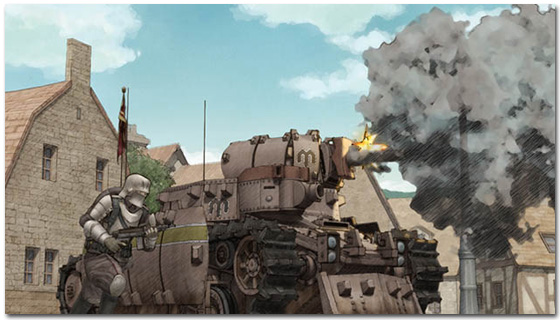
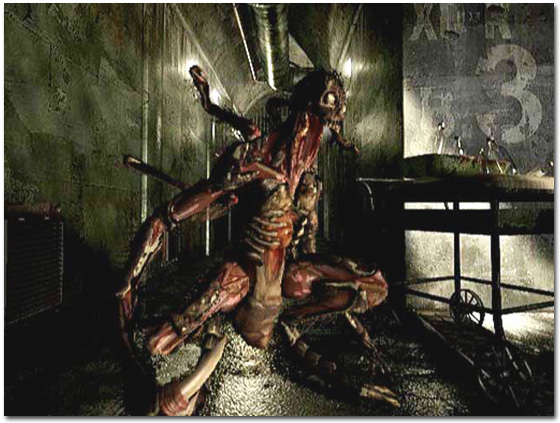



 Game Design Companion: A Critical Analysis of Wario Land 4 - $7.99
Game Design Companion: A Critical Analysis of Wario Land 4 - $7.99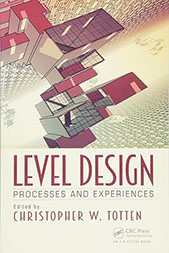 Level Design: Processes and Experiences
Level Design: Processes and Experiences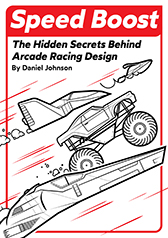 Speed Boost: The Hidden Secrets Behind Arcade Racing Design - $5.99
Speed Boost: The Hidden Secrets Behind Arcade Racing Design - $5.99 Adventures in Games Analysis: Volume I - $5.99
Adventures in Games Analysis: Volume I - $5.99







